

Mesopotamia. Time. Geography & Maps - Ancient Mesopotamia for Kids. Ancient Mesopotamia is included in a part of the world that was called "the fertile crescent".

Civilizations arose here because it was easy to grow food here. With the relative ease of food production, people settled down in place, population grew, and towns and cities were built. The Fertile Crescent includes the modern day countries of Iraq, Syria, Lebanon, Jordan, Palestine, and others. Geography explore. Map of Ancient Mesopotamia, to 2500 BCE. Ancient Sumer - Ancient Mesopotamia for Kids. The civilization that grew in Mesopotamia was named after one of its more famous cities, Sumer.

They started out as small villages and towns that were agricultural in nature, with of course some hunting and fishing, and gradually grew into great walled cities that traded amongst themselves as well as with other people. People who settled down and began to develop a civilization, in the land between two rivers, are known as the Sumerians. Cuneiform, Ancient Written Language - Ancient Mesopotamia for Kids. The ancient Sumerians were the first people to develop an actual written language.
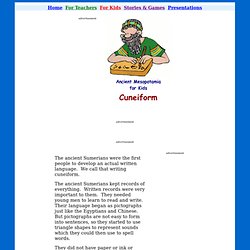
We call that writing cuneiform. The ancient Sumerians kept records of everything. Written records were very important to them. They needed young men to learn to read and write. Their language began as pictographs just like the Egyptians and Chinese. They did not have paper or ink or anything like that, so they used tools made of wood or stiff reeds to press the symbols into clay tablets.
Writing. Ancient Mesopotamia: This History, Our History. Learning Collection. 721 BC - 705 BC Iron, Bronze Khorsabad 23 cm diam.
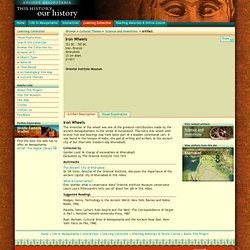
A11811 Oriental Institute Museum The invention of the wheel was one of the greatest contributions made by the ancient Mesopotamians to the whole of humankind. This early iron wheel with bronze hub and bearings may have been part of a wooden ceremonial cart. Ancient Civilizations : Science : Invention of the Wheel. As of July 1, 2013 ThinkQuest has been discontinued.
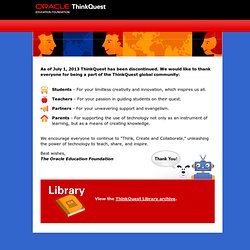
We would like to thank everyone for being a part of the ThinkQuest global community: Students - For your limitless creativity and innovation, which inspires us all. Teachers - For your passion in guiding students on their quest. Partners - For your unwavering support and evangelism. Parents - For supporting the use of technology not only as an instrument of learning, but as a means of creating knowledge.
We encourage everyone to continue to “Think, Create and Collaborate,” unleashing the power of technology to teach, share, and inspire. Ancient Babylon - Ancient Mesopotamia for Kids. One of the great cities of ancient times was the city of Babylon.
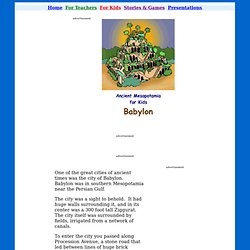
Babylon was in southern Mesopotamia near the Persian Gulf. The city was a sight to behold. It had huge walls surrounding it, and in its center was a 300 foot tall Ziggurat. The city itself was surrounded by fields, irrigated from a network of canals. To enter the city you passed along Procession Avenue, a stone road that led between lines of huge brick animals. Astronomers. Astronomer story.
Astronomer challenge. Trade. Trade and Transport explore. The Hanging Gardens of Babylon - 7 Wonders of the Ancient World. Hanging gardens of babylon. Hammurabi's Code - Ancient Mesopotamia for Kids. Hammurabi's Code. As of July 1, 2013 ThinkQuest has been discontinued.

We would like to thank everyone for being a part of the ThinkQuest global community: Students - For your limitless creativity and innovation, which inspires us all. Teachers - For your passion in guiding students on their quest. Partners - For your unwavering support and evangelism. Parents - For supporting the use of technology not only as an instrument of learning, but as a means of creating knowledge. We encourage everyone to continue to “Think, Create and Collaborate,” unleashing the power of technology to teach, share, and inspire. Ancient Assyria - Ancient Mesopotamia for Kids. At the same time that Babylon was rising to greatness in southern Mesopotamia, in Northern Mesopotamia another group was growing strong.
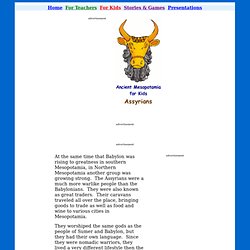
The Assyrians were a much more warlike people than the Babylonians. They were also known as great traders. Their caravans traveled all over the place, bringing goods to trade as well as food and wine to various cities in Mesopotamia. Palaces story. Gods challenge. Palaces explore. Palaces. Gilgamesh - Ancient Mesopotamia for Kids. Ziggurats - Ancient Mesopotamia for Kids. In ancient Sumer, in the center of each town, was the Ziggurat.
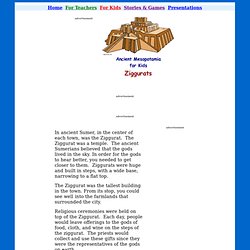
The Ziggurat was a temple. The ancient Sumerians believed that the gods lived in the sky. In order for the gods to hear better, you needed to get closer to them. Ziggurats were huge and built in steps, with a wide base, narrowing to a flat top. Ziggurats Explore. Tombs. Ziggurats - Story. Glossary. Ziggurats challenge. The great Flood: the story from the Bible. The Great Flood: mythological story about a great destruction that once befell the earth.
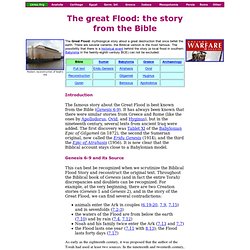
There are several variants; the Biblical version is the most famous. The possibility that there is a historical event behind the story (a local flood in southern Babylonia in the twenty-eighth century BCE) can not be excluded. Introduction The famous story about the Great Flood is best known from the Bible (Genesis 6-9). It has always been known that there were similar stories from Greece and Rome (like the ones by Apollodorus, Ovid, and Hyginus), but in the nineteenth century, several texts from ancient Iraq were added. Genesis 6-9 and its Source This can best be recognized when we scrutinize the Biblical Flood Story and reconstruct the original text.
As early as the eighteenth century, it was proposed that the author of the Torah had used at least two sources. A possible, perhaps even likely, reconstruction of these two sources can be found here. General Pattern Differences.